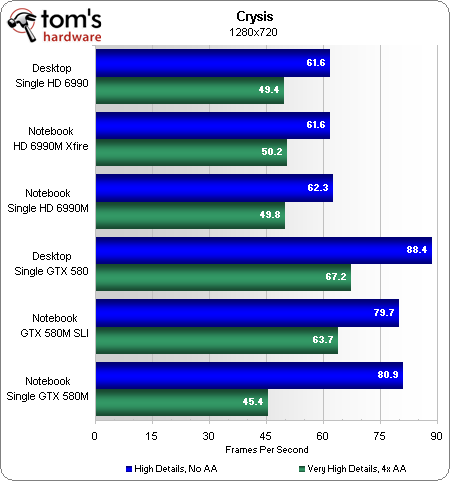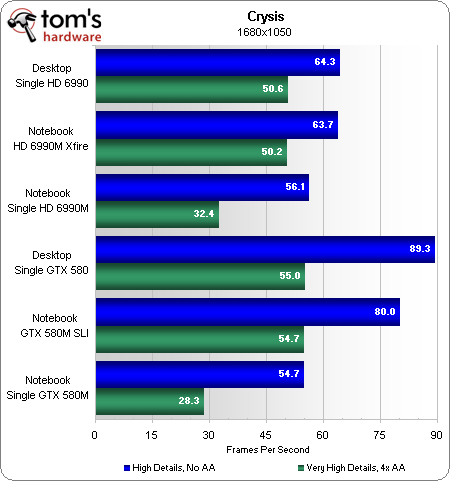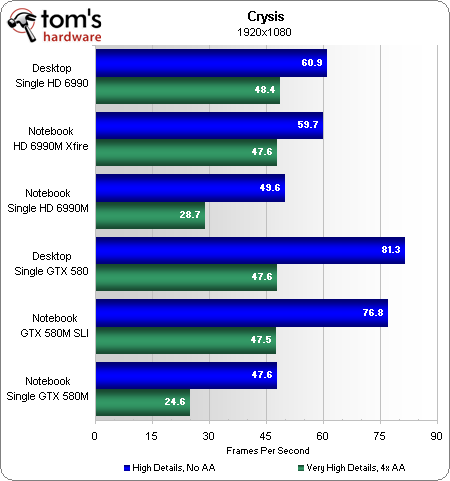Radeon HD 6990M And GeForce GTX 580M: A Beautiful Lie
We’ve been more than outspoken about the naming AMD and Nvidia use for their mobile GPUs. Are they really trying to mislead buyers, though? We briefly examine their methodology and frame that against the limitations of high-end mobile computing.
Benchmark Results: Crysis
Retired immediately after our previous GeForce GTX 580M review, Crysis has shown us bottlenecks in everything from GPUs to storage subsystems. GPU performance scales a little faster than CPU performance, which is one of the reasons we began looking for newer benchmarks to stress our graphics configurations.
This could be the perfect example of why so many owners of AMD cards insist they be tested on overclocked Intel platforms: the Radeons appear more CPU-bottlenecked than the GeForce solutions, and even the stock Core i7-990X CPU used by all configurations isn’t enough to overcome that shortcoming.
Big spenders don’t want to play their games at 1680x1050. But, if they had to, they’d find both of the single-GPU mobile configurations to be unacceptably slow using High quality details and 4x AA. The dual-GPU setups remain CPU-bottlenecked, for the most part.
Our highest 1920x1080 settings are where AMD's Radeon HD 6990M CrossFire finally catches up to the GeForce GTX 580M in SLI. The desktop card needs even higher resolutions to prove its superiority, but this is the point where we run out of scalability on the notebook's panel.
Both AMD and Nvidia demonstrate a single desktop card outpacing two of their notebook-oriented modules named too similarly for our comfort, which starts to illustrate our point about customers potentially being led astray as they spec-out their notebooks. A higher available resolution would have simply driven this point home more definitively.
Get Tom's Hardware's best news and in-depth reviews, straight to your inbox.
Current page: Benchmark Results: Crysis
Prev Page Test Settings And Benchmarks Next Page Benchmark Results: Just Cause 2


